There is some encouraging evidence regarding the positive influence of vitamin D on COVID-19. But is it convincing? Is it causal? As always, it is worth looking at the totality of the reliable evidence.
In this systematic review and meta-analysis, the researchers analyze the association between vitamin D deficiency and COVID-19 severity. They conducted an analysis of the prevalence of vitamin D deficiency and insufficiency in people with the disease. Five online databases—Embase, PubMed, Scopus, Web of Science, ScienceDirect and pre-print Medrevix were searched. The inclusion criteria were observational studies measuring serum vitamin D in adult and elderly subjects with COVID-19. The main outcome was the prevalence of vitamin D deficiency in severe cases of COVID-19.
The researchers identified 1542 articles and 27 met their inclusion criteria. The results show that
- vitamin D deficiency was not associated with a higher chance of infection by COVID-19,
- severe cases of COVID-19 present 64% more vitamin D deficiency compared with mild cases,
- vitamin D concentration insufficiency increased hospitalization and mortality rates,
- There was a positive association between vitamin D deficiency and the severity of the disease.
The authors concluded that the results of the meta-analysis confirm the high prevalence of vitamin D deficiency in people with COVID-19, especially the elderly. We should add that vitamin D deficiency was not associated with COVID-19 infection. However, we observed a positive association between vitamin D deficiency and the severity of the disease. From this perspective, evaluating blood vitamin D levels could be considered in the clinical practice of health professionals. Moreover, vitamin D supplementation could be considered in patients with vitamin D deficiency and insufficiency, if they have COVID-19. However, there is no support for supplementation among groups with normal blood vitamin D values with the aim of prevention, prophylaxis or reducing the severity of the disease.
These are interesting findings, no doubt. They relate to associations, as the authors repeatedly stress in the text of the paper. They do not, however, signify cause and effect relationships. The principal outcome of this research should be a hypothesis that subsequently needs testing in clinical trials.
So, why on earth did the authors chose that seriously misleading title of their paper? It clearly implies a causal effect; and this can only be verified by conducting clinical trials. One such study has been published (as discussed here) and it concluded that administration of calcifediol may improve the clinical outcome of subjects requiring hospitalization for COVID-19.
My conclusion: it seems well worth conducting more and more rigorous clinical trials.
Despite reported widespread use of dietary supplements by cancer patients, few empirical data with regard to their safety or efficacy exist. Because of concerns that antioxidants could reduce the cytotoxicity of chemotherapy, a prospective study was carried out to evaluate associations between supplement use and breast cancer outcomes.
Patients with breast cancer randomly assigned to an intergroup metronomic trial of cyclophosphamide, doxorubicin, and paclitaxel were queried on their use of supplements at registration and during treatment (n =1,134). Cancer recurrence and survival were indexed at 6 months after enrollment.
There were indications that use of any antioxidant supplement (vitamins A, C, and E; carotenoids; coenzyme Q10) both before and during treatment was associated with an increased hazard of recurrence and, to a lesser extent, death. Relationships with individual antioxidants were weaker perhaps because of small numbers. For non-antioxidants, vitamin B12 use both before and during chemotherapy was significantly associated with poorer disease-free survival and overall survival. Use of iron during chemotherapy was significantly associated with recurrence as was use both before and during treatment. Results were similar for overall survival. Multivitamin use was not associated with survival outcomes.
The authors concluded that associations between survival outcomes and use of antioxidant and other dietary supplements both before and during chemotherapy are consistent with recommendations for caution among patients when considering the use of supplements, other than a multivitamin, during chemotherapy.
These data are interesting but, for a range of reasons, not compelling. There might have been several important confounding factors distorting the findings. Even though clinical and life-style variables were statistically adjusted for in this study, it might still be possible that supplement users and non-users were not comparable in impotant prognostic variables. Simply put, sicker patients might be more likely to use supplements and would then have worse outcomes not because of the supplements but their disease severity.
Moreover, it seems important to note that other research showed the opposite effects. For instance, a study prospectively examined the associations between antioxidant use after breast cancer (BC) diagnosis and BC outcomes in 2264 women. The cohort included women who were diagnosed with early stage, primary BC from 1997 to 2000 who enrolled, on average, 2 years postdiagnosis. Baseline data were collected on antioxidant supplement use since diagnosis and other factors. BC recurrence and mortality were ascertained, and hazard ratios (HRs) and 95% confidence intervals (CIs) were estimated.
Antioxidant supplement use after diagnosis was reported by 81% of women. Among antioxidant users, frequent use of vitamin C and vitamin E was associated with a decreased risk of BC recurrence. Vitamin E use was associated with a decreased risk of all-cause mortality. Conversely, frequent use of combination carotenoids was associated with increased risk of death from BC and all-cause mortality.
The authors concluded that frequent use of vitamin C and vitamin E in the period after BC diagnosis was associated with a decreased likelihood of recurrence, whereas frequent use of combination carotenoids was associated with increased mortality. The effects of antioxidant supplement use after diagnosis likely differ by type of antioxidant.
Yet another study provided limited support for the hypothesis that antioxidant supplements may reduce the risk of breast cancer recurrence or breast cancer-related mortality.
Confused?
Me too!
What is needed, it seems, is a systematic review of all these contradicting studies. A 2009 review is available of the associations between antioxidant supplement use during breast cancer treatment and patient outcomes.
Inclusion criteria were: two or more subjects; clinical trial or observational study design; use of antioxidant supplements (vitamin C, vitamin E, antioxidant combinations, multivitamins, glutamine, glutathione, melatonin, or soy isoflavones) during chemotherapy, radiation therapy, and/or hormonal therapy for breast cancer as exposures; treatment toxicities, tumor response, recurrence, or survival as outcomes.
A total of 22 articles met the criteria. Their findings did not support any conclusions regarding the effects of individual antioxidant supplements during conventional breast cancer treatment on toxicities, tumor response, recurrence, or survival. A few studies suggested that antioxidant supplements might decrease side effects associated with treatment, including vitamin E for hot flashes due to hormonal therapy and glutamine for oral mucositis during chemotherapy. Underpowered trials suggest that melatonin may enhance tumor response during treatment.
The authors concluded that the evidence is currently insufficient to inform clinician and patient guidelines on the use of antioxidant supplements during breast cancer treatment. Thus, well designed clinical trials and observational studies are needed to determine the short- and long-term effects of such agents.
Still confused?
Me too!
Antioxidants seem to have evolved as parts of elaborate networks in which each substance plays slightly different roles. This means that each antioxidant has a different spectrum of actions. And this means that it is probably not very constructive to lump them all together and excect to see uniform effects. What we would need to create more clarity is a series of RCTs on single antioxidants. But who is going to fund them? We might be waiting a long time for more clarity. Meanwhile, consuming a healthy and well-balanced diet might be the best advice for cancer patients and everyone else.
Out of the blue I received an email infroming me that Wellness consultancy and online health boutique Conscious Spaces is marking the Black Friday sale season with 12% off its hugely popular Qi tech EMF protection devices. Shop Black EMFriday at consciousspaces.com/collections/black-emfriday…
I must be a sucker for such stuff, so I had to have a look.
Most impressive!
The ‘Qi-Max Cell™ 5G / WIFI / EMF Protection For Home & Business’ for instance is for sale at £4,399.00 Sale Price (normally it costs £600 more!!!).
Naturally, I was fascinated and had to know more. Luckily, the email told me all I needed to know:
What are EMFs?
EMFs, or electromagnetic fields, are invisible fields of energy, or radiation waves. There are many different types of electromagnetic fields in the world around us. They come from both natural sources (like sunlight) and man-made sources (like mobile phones). Over the last century, exposure to man-made EMFs has been steadily increasing in line with the growing demand for electricity and the more recent explosion of wireless technology, including smart phones, laptops and tablets.
Where’s the harm?
Exposure to EMFs of the kind emitted by mobile technologies has been found to be harmful to health by a growing number independent, non-industry funded scientists and doctors. With thousands of papers, the extent of scientific research into the health impacts of EMF radiation exposure is too vast to list, but a cohesive body of evidence exists surrounding the damage caused to DNA, cells, organ systems, fertility, brain function, liver and memory.
How do Qi tech devices work?
WaveGuard’s Qi technology provides a sanctuary from EMFs by creating a protective shield of negatively charged electrons. These devices come in a variety of sizes to provide different size torus fields of protection, from the Qi-Me, for personal protection on the go, through to the Qi-Max, providing a protective field with a 50m radius.
The Qi-Me device uses the same technology as the larger Qi-Shield device which has been scientifically proven to provide EMF Protection tested using a double-blind study at the BION Institute. Priced at £399 (£350 during Black Friday), it provides a 1m radius (2m diameter) of EMF protection and is available in Walnut, Maple, Olive and Yew.
The Qi-Shield provides an EMF protection field of 2.5m radius (5m diameter). Perfect for your office, bedroom, vehicle or air travel, it is priced at £899 (£790 during Black Friday) and is available in walnut.
The Qi-Home provides the relief of being protected from harmful and damaging EMFs while at home, with an EMF protection field of 7.5m radius (15m diameter). It is priced at £2750 (£2,420 during Black Friday) it is available in Swiss pine, oak and beech.
The Qi-Max Cell is the largest and most powerful EMF protection device, creating an EMF protection field of 50m radius (100m diameter). Available in Swiss pine, it is priced at £4999 (£4,399 during Black Friday).
Tara Williams, founder of Conscious Spaces, says: ‘The calming effect I felt when I first held a Qi-Shield in a high EMF environment was a revelation. My heart rate is usually up in those sorts of settings, but this had an immediate positive effect. I now carry this or the Qi-Me with me wherever I go and have noticed a real improvement in my EHS (electromagnetic hypersensitivity) symptoms.’
________________________________________
As I said, I am most impressed by the ‘Qi-Max Cell’ (it creates an EMF protection field of 50m radius (100m diameter) in width and 35m radius (70m diameter) in height, protecting your family, workplace and business against mobile phone radiation, WiFi, electrical frequencies, electro-magnetic frequencies) and, of course by the prospect of saving £600!
But seriously! Would it not be illuminating to get such a device and take it apart to see what technology it actually contains? Or does one of my readers already know?
In its homeland, Germany, homeopathy had a free ride for many decades. Only in the last 5 years or so, has a vocal opposition emerged of people who argue that disproven treatments should not be paid for by the public purse. Most political parties have been clever enough to pick up on the changed attitude of the German people and have thus joined more or less openly into the growing criticism of homeopathy. One noteable exception has been the German Green Party who have a long tradition of being in favour of all things alternative. Now this seems to have finally changed.
The ‘Frankfurter Allgemeine Zeitung’ (FAZ) just reported that the German Green Party no longer backs homeopathy. After many years of supporting homeopathy and other so-called alternative medicines (SCAMs) and after years of agonising about it, the party has now decided to side with reason, science and evidence. Last Sunday, on their annual party conference, the Greens have voted to back a statement according to which the German health insurers should only reemburse treatments which are “medically reasonable and justifiable and which are supported by evidence of efficacy that is scientifically proven”. Even though they did not mention it in the text, it is understood that the they meant foremost homeopathy.
The Greens rejected a suggestion to go even further and would have stated that a treatment should not be covered, if “its efficacy has not been scientifically proven to be better than a placebo.” They also did not agree to an application by the homeopathy lobby to state that would have allowed the reembursement of homeopathy.
For those of my readers who read German, here is the short article from the FAZ.
Die Grünen haben in ihrem langwierigen Streit um die Homöopathie eine Lösung gefunden. Der Parteitag billigte am Sonntag eine Formulierung, derzufolge nur noch Leistungen von den gesetzlichen Krankenkassen übernommen werden sollten, „die medizinisch sinnvoll und gerechtfertigt sind und deren Wirksamkeit wissenschaftlich erwiesen ist“. Damit gehen die Grünen auf Distanz zu Homöopathie als Kassenleistung – auch wenn die umstrittene Heilmethode in dem Text nicht ausdrücklich genannt wird.
Eine noch weitergehende Formulierung, derzufolge Leistungen, deren Wirksamkeit über den Placeboeffekt hinaus nicht wissenschaftlich bewiesen sei, explizit als Kassenleistung ausgeschlossen werden sollten, fand aber keine Mehrheit.
What is the ‘DRX9000 decompression system’? It is a table attached to Space Age-looking controls that allegedly stretches the disks of the vertebrae, allowing protrusions to be pulled back into place and thus taking pressure off nerve roots. The website of Excite Medical informs us that the DRX9000® has been cleared by the FDA to treat patients suffering with incapacitating lower back pain and sciatica caused by herniated discs, degenerative discs, and posterior facet syndrome.
This sounds almost as though it is evidence based, doesn’t it?
But is it?
My Medline search resulted in three papers about the device (if anyone knows of more, please let me know):
- Background: This study‘s goal was a retrospective chart audit of 100 outpatients with discogenic low back pain (LBP) lasting more than 12 weeks treated with a 2-month course of motorized spinal decompression via the DRX9000 (Axiom Worldwide, Tampa, FL, U.S.A.).Methods: Patients at a convenience sample of four clinics received 30-minute DRX9000 sessions daily for the first 2 weeks tapering to 1 session/week. Treatment protocol included lumbar stretching, myofascial release, or heat prior to treatment, with ice and/or muscle stimulation afterwards. Primary outcome was verbal numerical pain intensity rating (NRS) 0 to 10 before and after the 8-week treatment.Results: Of the 100 initial subjects, three withdrew their protected health information, and three were excluded because their LBP duration was less than 12 weeks. The remaining 94 subjects (63% female, 95% white, age = 55 (SD 16) year, 52% employed, 41% retired, LBP median duration of 260 weeks) had diagnoses of herniated disc (73% of patients), degenerative disc disease (68%), or both (27%). Mean NRS equaled 6.05 (SD 2.3) at presentation and decreased significantly to 0.89 (SD 1.15) at end of 8-week treatment (P < 0.0001). Analgesic use also appeared to decrease (charts with data = 20) and Activities of Daily Living improved (charts with data = 38). Follow-up (mean 31 weeks) on 29/94 patients reported mean 83% LBP improvement, NRS of 1.7 (SD 1.15), and satisfaction of 8.55/10 (median 9).Conclusions: This retrospective chart audit provides preliminary data that chronic LBP may improve with DRX9000 spinal decompression. Randomized double-blind trials are needed to measure the efficacy of such systems.
- Background: Because previous studies have suggested that motorized non-surgical spinal decompression can reduce chronic low back pain (LBP) due to disc degeneration (discogenic low back pain) and disc herniation, it has accordingly been hypothesized that the reduction of pressure on affected discs will facilitate their regeneration. The goal of this study was to determine if changes in LBP, as measured on a verbal rating scale, before and after a 6-week treatment period with non-surgical spinal decompression, correlate with changes in lumbar disc height, as measured on computed tomography (CT) scans.Methods: A retrospective cohort study of adults with chronic LBP attributed to disc herniation and/or discogenic LBP who underwent a 6-week treatment protocol of motorized non-surgical spinal decompression via the DRX9000 with CT scans before and after treatment. The main outcomes were changes in pain as measured on a verbal rating scale from 0 to 10 during a flexion-extension range of motion evaluation and changes in disc height as measured on CT scans. Paired t-test or linear regression was used as appropriate with p < 0.05 considered to be statistically significant.Results: We identified 30 patients with lumbar disc herniation with an average age of 65 years, body mass index of 29 kg/m2, 21 females and 9 males, and an average duration of LBP of 12.5 weeks. During treatment, low back pain decreased from 6.2 (SD 2.2) to 1.6 (2.3, p < 0.001) and disc height increased from 7.5 (1.7) mm to 8.8 (1.7) mm (p < 0.001). Increase in disc height and reduction in pain were significantly correlated (r = 0.36, p = 0.044).Conclusions: Non-surgical spinal decompression was associated with a reduction in pain and an increase in disc height. The correlation of these variables suggests that pain reduction may be mediated, at least in part, through a restoration of disc height. A randomized controlled trial is needed to confirm these promising results.
- Objectives: This study aims to compare the efficiency of conventional motorized traction (CMT) with non-surgical spinal decompression (NSD) using the DRX9000™ device in patients with low back pain associated with lumbar disc herniation (LDH).Patients and methods: Between March 2009 and September 2009, a total of 48 patients (29 females, 19 males; mean age 43.1±9.8 years; range, 18 to 65 years) were randomized into two groups. The first group (n=24) underwent CMT and the second group (n=24) underwent NSD for a total of 20 sessions over six weeks. The patients were evaluated before and after the treatment. Pain was assessed using the Visual Analog Scale (VAS), functional status using the Oswestry Disability Index (ODI), quality of life using the Short Form-36 (SF-36), state of depression mood using the Beck Depression Inventory (BDI), and the global assessment of the illness using the Patient’s Global Assessment of Response to Therapy (PGART) and Investigator’s Global Assessment of Response to Therapy (IGART) scales. Results: There was no significant difference in the evaluation outcomes before the treatment between the groups. However, a statistically significant decline was found in the VAS, ODI, and BDI scores after the treatment in both groups (all p<0.001). Except for two subgroups, no significant changes were observed in the SF-36 form. Assessment of “marked improvement” was globally most frequently reported one in both groups. No significant difference was observed in the evaluation outcomes after treatment between the groups. Conclusion: Our study results show that both CMT and NSD are effective methods in pain management and functional status and depressive mood improvement in patients with LDH, and NSD is not superior to CMT in terms of pain, functionality, depression and quality of life.
Studies one and two are retrospective and thus useless for establishing cause and effect. Study 3 is an RCT, but as an equivalence study it is desperately underpowered. Most likely, it merely demonstrates that both of the tested treatments are ineffective.
In other words, there seems to be no good evidence that the DRX9000 works for low back pain (LBP). This can hardly come as a surprise to anyone who has kept up with the evidence. What is more, traction can also cause significant harm. The current Cochrane review concludes that traction, either alone or in combination with other treatments, has little or no impact on pain intensity, functional status, global improvement and return to work among people with LBP.
Yet, the claims for the device are grandiose. According to a recent article in NBCnews (from which I take the liberty of citing passages below), the company behind the DRX9000, Excite Medical, claims that nearly 9 out of 10 patients who qualify for treatment on the DRX9000 will get relief. Excite Medical also says that 2,400 of its systems are in use in 45 nations and shows it off at trade shows everywhere from Las Vegas to Dusseldorf, Germany, and Dubai, United Arab Emirates. Chiropractors across the United States buy the machines from Excite Medical, often using the same claims as the manufacturers — sometimes even going beyond them.
But a FairWarning investigation — based on review of lawsuits, scientific studies, government documents, chiropractic websites and interviews with experts — found that the claims of success for spinal decompression stretch the truth, enticing patients to pay thousands of dollars for a treatment that has never been proven in scientifically rigorous studies to live up to its stupendous billing.
Despite a spate of state regulatory actions in the 2000s against Axiom Worldwide, the original manufacturer of the DRX9000, and chiropractors for making unproven claims, they still permeate the internet. And federal and state regulators who can sanction false claims now show little evidence that they are interested in reining them in…
“This non-surgical spinal decompression system … is scientifically Proven By Mayo Clinic, Duke University, Stanford, and Johns Hopkins University School of Medicine!” according to the website for GO Chiropractic in Illinois, which offers treatment with the DRX9000. Jamie Stephens, one of the chiropractors who runs Go Chiropractic, said in an email, “We have seen nothing but outstanding results from this technology,” and referred further questions to Excite Medical, which he said provided his advertising materials…
Excite Medical says [the treatment] typically runs about $3,500 for a full course of sessions on the DRX9000…
Chiropractors who paid as much as $125,000 for the device also got a package of suggested promotional materials, including the claim the DRX9000 was used in a scientific study that showed an 86 percent success rate. Many of the chiropractors took out newspaper ads that included the claims.
In later lawsuits, chiropractors complained that they were duped by Axiom. One, James Spiering in Texas, described being flown, plane fare and hotel paid, to Axiom headquarters in Florida, where he was told he would recover his investment in four months and clear $1.7 million in five years. Spiering said he was shown videos full of “fraudulent” claims. The parties settled out of court in 2010 for an undisclosed amount.
Regulators across the U.S. also had started to take notice of the DRX9000’s claims of extraordinary success. Over the course of three years or so, the Oregon attorney general, the Florida attorney general and a group of 11 California district attorneys all filed suits against Axiom or a former chiropractor who created some of its marketing. The suits ended in penalties — $1.125 million in the California case — and Axiom agreed to only make claims based on reliable scientific evidence, according to news stories and settlement documents.
_______________________________
What does that tell us?
I think it suggests that:
- LBP patients will try any rubbish that promises help.
- Chiropractors and other back pain quacks often could not care less about the evidence.
- Money is the driving force behind most back pain quackery.
Many experts doubt that acupuncture generates the many positive health effects that are being claimed by enthusiasts. Yet, few consider that acupuncture might not be merely useless but could even make things worse. Here is a trial that seems to suggest exactly that.
This study evaluated whether combining two so-called alternative medicines (SCAMs), acupuncture and massage, reduce postoperative stress, pain, anxiety, muscle tension, and fatigue more than massage alone.
Patients undergoing autologous tissue breast reconstruction were randomly assigned to one of two postoperative SCAMs for three consecutive days. All participants were observed for up to 3 months. Forty-two participants were recruited from January 29, 2016 to July 11, 2018. Twenty-one participants were randomly assigned to massage alone and 21 to massage and acupuncture. Stress, anxiety, relaxation, nausea, fatigue, pain, and mood (score 0-10) were measured at enrollment before surgery and postoperative days 1, 2, and 3 before and after the intervention. Patient satisfaction was evaluated.
Stress decreased from baseline for both Massage-Only Group and Massage+Acupuncture Group after each treatment intervention. Change in stress score from baseline decreased significantly more in the Massage-Only Group at pretreatment and posttreatment. After adjustment for baseline values, change in fatigue, anxiety, relaxation, nausea, pain, and mood scores did not differ between groups. When patients were asked whether they would recommend the study, 100% (19/19) of Massage-Only Group and 94% (17/18) of Massage+Acupuncture Group responded yes.
The authors concluded tha no additive beneficial effects were observed with addition of acupuncture to massage for pain, anxiety, relaxation, nausea, fatigue, and mood. Combined massage and acupuncture was not as effective in reducing stress as massage alone, although both groups had significant stress reduction. These findings indicate a need for larger studies to explore these therapies further.
I recently went to the supermarket to find out whether combining two bank notes (£10 + £5) can buy more goods than one £10 note alone. What I found was interesting: the former did indeed purchase more than the latter. Because I am a scientist, I did not stop there; I went to a total of 10 shops and my initial finding was confirmed each time: A+B results in more than A alone.
It stands to reason that the same thing happens with clinical trials. We even tested this hypothesis in a systematic review entitled ‘A trial design that generates only ”positive” results‘. Here is our abstract:
In this article, we test the hypothesis that randomized clinical trials of acupuncture for pain with certain design features (A + B versus B) are likely to generate false positive results. Based on electronic searches in six databases, 13 studies were found that met our inclusion criteria. They all suggested that acupuncture is effective (one only showing a positive trend, all others had significant results). We conclude that the ‘A + B versus B’ design is prone to false positive results and discuss the design features that might prevent or exacerbate this problem.
But why is this not so with the above-mentioned study?
Why is, in this instance, A even more that A+B?
There are, of course, several possible answers. To use my supermarket example again, the most obvious one is that B is not a £5 note but a negative amount, a dept note, in other words: A + B can only be less than A alone, if B is a minus number. In the context of the clinical trail, this means acupuncture must have caused a negative effect.
But is that possible? Evidently yes! Many patients don’t like needles and experience stress at the idea of a therapist sticking one into their body. Thus acupuncture would cause stress, and stress would have a negative effect on all the other parameters quantified in the study (pain, anxiety, muscle tension, and fatigue).
My conclusion: in certain situations, acupuncture is more than just useless; it makes things worse.
Melatonin is an indolamine hormone which is secreted from the human pineal gland during night-time acting as physiological regulator. In many countries, dietary supplements containing synthetically produced melatonin are available. Melatonin is being promoted as a treatment of a range of conditions, including virtually all types of cancer.
One website, for instance, states that the anti-cancer benefits of melatonin aren’t just indirect; this miracle molecule is also classified as a directly cytotoxic hormone and anti-cancer agent. Studies have referred to melatonin as a “full-service anti-cancer agent” due to its ability to inhibit the initiation of cell mutation and cancer growth, and to halt the progression and metastasis of cancer cell colonies.
Such statements sound far too good to be true. So, let’s have a look and find out what the evidence tells us. Test-tube experiments suggest that melatonin has anti-cancer effects.[1] Its actions include the advancement of apoptosis, the arrest of the cell cycle, inhibition of metastasis, and antioxidant activity.[2]
A review of 21 clinical trials of melatonin for cancer found positive effects for complete response, partial response, and stable disease. In trials combining melatonin with chemotherapy, adjuvant melatonin therapy decreased 1-year mortality and improved outcomes of complete response, partial response, and stable disease. In these studies, melatonin also significantly reduced asthenia, leukopenia, nausea and vomiting, hypotension, and thrombocytopenia. The authors concluded that melatonin may benefit cancer patients who are also receiving chemotherapy, radiotherapy, supportive therapy, or palliative therapy by improving survival and ameliorating the side effects of chemotherapy.[3]
A further systematic review of RCTs of melatonin in solid tumour cancer patients evaluated its effect on one-year survival. Ten trials were included of melatonin as either sole treatment or as adjunct treatment. Melatonin reduced the risk of death at 1 year. Effects were consistent across melatonin dose, and type of cancer. No severe adverse events were reported.[4]
A 2012 systematic review confirmed these findings by concluding that Melatonin as an adjuvant therapy for cancer led to substantial improvements in tumor remission, 1-year survival, and alleviation of radiochemotherapy-related side effects.[5]
Finally, a 2020 review concluded that melatonin in combination with anticancer agents may improve the efficacy of routine medicine and survival rate of patients with cancer. [6] Apart from its direct anticancer potential, melatonin also seems to reduce chemotherapy toxicity, while improving its therapeutic efficacy.[7]
So, is this evidence compelling? While all this does indeed sound encouraging, it is necessary to mention several important caveats:
- The primary studies of melatonin suffer from several methodological shortcomings.
- Their vast majority originate from one single research group.
- In recent years, there have been no further clinical studies trying to replicate the initial findings.
This means that definitive trials are still missing, and it would seem wise to interpret the existing evidence with great caution.
References
[1] Kong X, Gao R, Wang Z, Wang X, Fang Y, Gao J, Reiter RJ, Wang J. Melatonin: A Potential Therapeutic Option for Breast Cancer. Trends Endocrinol Metab. 2020 Sep 3:S1043-2760(20)30155-7. doi: 10.1016/j.tem.2020.08.001. Epub ahead of print. PMID: 32893084.
[2] Samanta S. Melatonin: an endogenous miraculous indolamine, fights against cancer progression. J Cancer Res Clin Oncol. 2020 Aug;146(8):1893-1922. doi: 10.1007/s00432-020-03292-w. Epub 2020 Jun 24. PMID: 32583237.
[3] Seely D, Wu P, Fritz H, Kennedy DA, Tsui T, Seely AJ, Mills E. Melatonin as adjuvant cancer care with and without chemotherapy: a systematic review and meta-analysis of randomized trials. Integr Cancer Ther. 2012 Dec;11(4):293-303. doi: 10.1177/1534735411425484. Epub 2011 Oct 21. PMID: 22019490.
[4] Mills E, Wu P, Seely D, Guyatt G. Melatonin in the treatment of cancer: a systematic review of randomized controlled trials and meta-analysis. J Pineal Res. 2005 Nov;39(4):360-6. doi: 10.1111/j.1600-079X.2005.00258.x. PMID: 16207291.
[5] Wang YM, Jin BZ, Ai F, Duan CH, Lu YZ, Dong TF, Fu QL. The efficacy and safety of melatonin in concurrent chemotherapy or radiotherapy for solid tumors: a meta-analysis of randomized controlled trials. Cancer Chemother Pharmacol. 2012 May;69(5):1213-20. doi: 10.1007/s00280-012-1828-8. Epub 2012 Jan 24. PMID: 22271210.
[6] Pourhanifeh MH, Mehrzadi S, Kamali M, Hosseinzadeh A. Melatonin and gastrointestinal cancers: Current evidence based on underlying signaling pathways. Eur J Pharmacol. 2020 Nov 5;886:173471. doi: 10.1016/j.ejphar.2020.173471. Epub 2020 Aug 30. PMID: 32877658.
[7] Iravani S, Eslami P, Dooghaie Moghadam A, Moazzami B, Mehrvar A, Hashemi MR, Mansour-Ghanaei F, Mansour-Ghanaei A, Majidzadeh-A K. The Role of Melatonin in Colorectal Cancer. J Gastrointest Cancer. 2020 Sep;51(3):748-753. doi: 10.1007/s12029-019-00336-4. PMID: 31792737.
Misinformation by chiropractors is unfortunately nothing new and has been discussed ad nauseam on this blog. It is tempting to ask whether chiropractors have lost (or more likely never had) the ability to ditinguish real information from misinformation or substantiated from unsubstantiated claims. During the pandemic, the phenomenon of chiropractic misinformation has become even more embarrassingly obvious, as this new article highlights.
Chiropractors made statements on social media claiming that chiropractic treatment can prevent or impact COVID-19. The rationale for these claims is that spinal manipulation can impact the nervous system and thus improve immunity. These beliefs often stem from nineteenth-century chiropractic concepts. The authors of the paper are aware of no clinically relevant scientific evidence to support such statements.
The investigators explored the internet and social media to collect examples of misinformation from Europe, North America, Australia and New Zealand regarding the impact of chiropractic treatment on immune function. They discussed the potential harm resulting from these claims and explore the role of chiropractors, teaching institutions, accrediting agencies, and legislative bodies.
The authors conclude as follows: In this search of public media in Europe, North America, New Zealand, and Australia, we discovered many cases of misinformation. Claims of chiropractic treatment improving immunity conflict with the advice from authorities and the scientific consensus. The science referenced by these claims is missing, flawed or has no clinical relevance. Consequently, their claims about clinical effectiveness are spurious at best and misleading at worst. However, our examples cannot be used to make statements about the magnitude of the problem among practitioners as our samples were not intended to be representative. For that reason, we also did not include an analysis of the arguments provided in the various postings. In view of the seriousness of the topic, it would be relevant to conduct a systematic study on a representative sample of public statements, to better understand these issues. Our search illustrates the possible danger to public health of misinformation posted on social media and the internet. This situation provides an opportunity for growth and maturation for the chiropractic profession. We hope that individual chiropractors will reflect on and improve their communication and practices. Further, we hope that the chiropractic teaching institutions, regulators, and professional organisations will always demonstrate responsible leadership in their respective domains by acting to ensure that all chiropractors understand and uphold their fiduciary duties.
Several previous papers have found similar things, e.g.: Twitter activity about SMT and immunity increased during the COVID-19 crisis. Results from this work have the potential to help policy makers and others understand the impact of SMT misinformation and devise strategies to mitigate its impact.
The pandemic has crystallised the embarrassment about chiropractic false claims. Yet, the phenomenon of chiropractors misleading the public has long been known and arguably is even more important when it relates to matters other than COVID-19. Ten years ago, we published this paper:
Background: Some chiropractors and their associations claim that chiropractic is effective for conditions that lack sound supporting evidence or scientific rationale. This study therefore sought to determine the frequency of World Wide Web claims of chiropractors and their associations to treat, asthma, headache/migraine, infant colic, colic, ear infection/earache/otitis media, neck pain, whiplash (not supported by sound evidence), and lower back pain (supported by some evidence).
Methods: A review of 200 chiropractor websites and 9 chiropractic associations’ World Wide Web claims in Australia, Canada, New Zealand, the United Kingdom, and the United States was conducted between 1 October 2008 and 26 November 2008. The outcome measure was claims (either direct or indirect) regarding the eight reviewed conditions, made in the context of chiropractic treatment.
Results: We found evidence that 190 (95%) chiropractor websites made unsubstantiated claims regarding at least one of the conditions. When colic and infant colic data were collapsed into one heading, there was evidence that 76 (38%) chiropractor websites made unsubstantiated claims about all the conditions not supported by sound evidence. Fifty-six (28%) websites and 4 of the 9 (44%) associations made claims about lower back pain, whereas 179 (90%) websites and all 9 associations made unsubstantiated claims about headache/migraine. Unsubstantiated claims were made about asthma, ear infection/earache/otitis media, neck pain,
Conclusions: The majority of chiropractors and their associations in the English-speaking world seem to make therapeutic claims that are not supported by sound evidence, whilst only 28% of chiropractor websites promote lower back pain, which is supported by some evidence. We suggest the ubiquity of the unsubstantiated claims constitutes an ethical and public health issue.
It makes it clear that the misleading information of chiropractors is a serious problem. And I find it disappointing to see that so little has been done about it, and that progress seems so ellusive.
This, of course, begs the question, where does all this misinformation come from? The authors of the new paper stated that beliefs often stem from nineteenth-century chiropractic concepts. This, I believe, is very true and it gives us an important clue. It suggests that, because it is good for business, chiro schools are still steeped in obsolete notions of pseudo- and anti-science. Thus, year after year, they seem to churn out new generations of naively willing victims of the Dunning Kruger effect.
We have often heard it said on this blog and elsewhere that chiropractors are making great strides towards reforming themselves and becoming an evidence-based profession. In view of the data cited above, this does not ring all that true, I am afraid. Is the picture that emerges not one of a profession deeply embroiled in BS with but a few fighting a lost battle to clean up the act?
Alzheimer is a devastating condition. Despite much research, we are still far from being able to effectively prevent or treat it. Some claim that relatively simple dietary interventions might work. What does the evidence tell us?
The aim of this systematic review was to evaluate the effect of dietary interventions on the cognitive performance of individuals with Alzheimer’s disease (AD). Thirty-two RCT could be included.
The findings show that a wide range of supplements have been submitted to testing in RCTs. Most of the supplements seem to be less than useful. However, some seem to show some promise:
- Omega-3 fatty acid has positive effects at different doses.
- ‘Fortasyn Connect’ (a multi-nutrient mixture) seems to be effective in the early stages of the disease.
- Probiotic, Ginseng, Inositol and specialized nutritional formulas seem to have a positive effect on cognition.
Most of the primary studies had poor methodological quality, included patients with mild AD, small samples, and did not obtain significative results for all the cognitive outcomes.
The authors concluded that the effect of most dietary interventions on cognition in AD patients remains inconclusive, however, several nutrients, isolated or not, show potential to improve cognitive function in AD, especially in its early stages.
I am relieved that the authors of this thoroughly-researched review phrased their conclusions as cautiously as they did. The thing is, most of the primary trials are truly not worth writing home about. Some are just 4 weeks long, others include merely 30 odd patients. Many look more like marketing excercises than science.
The authors also stated that better quality studies are urgently needed to confirm the therapeutic potential of the diet so that a dietary recommendation in AD that contributes to the quality of life of patients and relatives can be established. This has become almost a standard sentence for ending a scientific paper. In this instance, however, it seems very true.
- the chiro suggests a manipulation of the neck;
- this often involves forcing a spinal joint beyond its physiological range of motion;
- the treatment will be short but needs repeating several times during the coming weeks;
- the expected benefits are a reduction of pain and improvement of motion;
- the total cost of the treatment series will be xy;
- there are many other treatment options for neck pain;
- most of these have a better risk/benefit profile than neck manipulation;
- having no treatment for neck pain at all is likely to lead to full resolution of the problem over time.
Apart from any doubts that chiropractors would actually comply with these requirements, the question remains: is the listed information sufficient? Does it outline a truly a fully informed consent? I think that essential aspects of informed consent are missing.
- The code does not explicidly require an explanation about the possible harms of spinal manipulation (i.e. 50% of all patients will suffer mild to moderate adverse effects lasting 2-3 days, and occasionally patients will have a stroke of which some have died).
- Moreover, the code mentions EXPECTED benefits, but not benefits supported by evidence. Chiros may well EXPECT their treatment to work, but what does the evidence show? As often discussed on this blog, the evidence is negative or very week, depending how you want to interpret it. The code does not require a chiro to inform his patients about this fact.
So, the way I see it, the code does not expressedly demand the chiro to explain his patient that the treatment he is being asked to consent to is
- not supported by sound evidence for effectiveness,
- nor that the treatment is burdened with significant risks.
And what about the other questions listed above? An Australian chiropractor who will remain anonymous gave me the following answers:
_____________________________________
Yet, Australian chiropractors claim that they abide by the ethical imperative of informed consent. Are they taking the Mickey?
Perhaps not. Perhaps they are merely trying to make sure they do not lose the majority of their clientele. As I already pointed out in my previous post, fully informed consent would make most chiropractic patients turn round and run a mile.


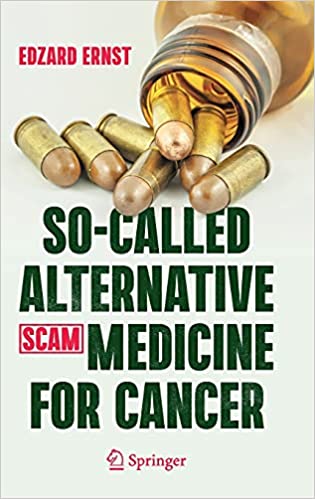
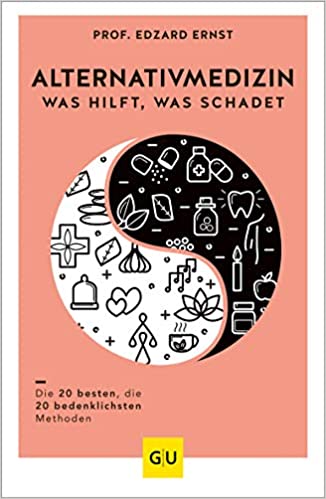
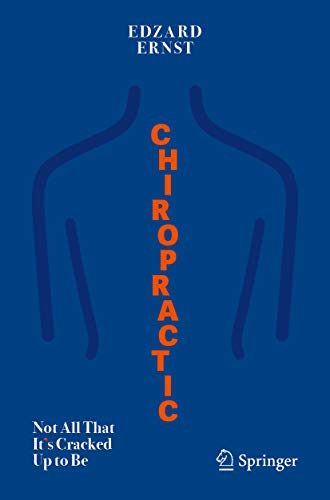
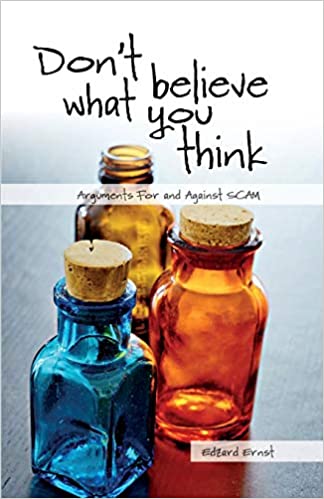
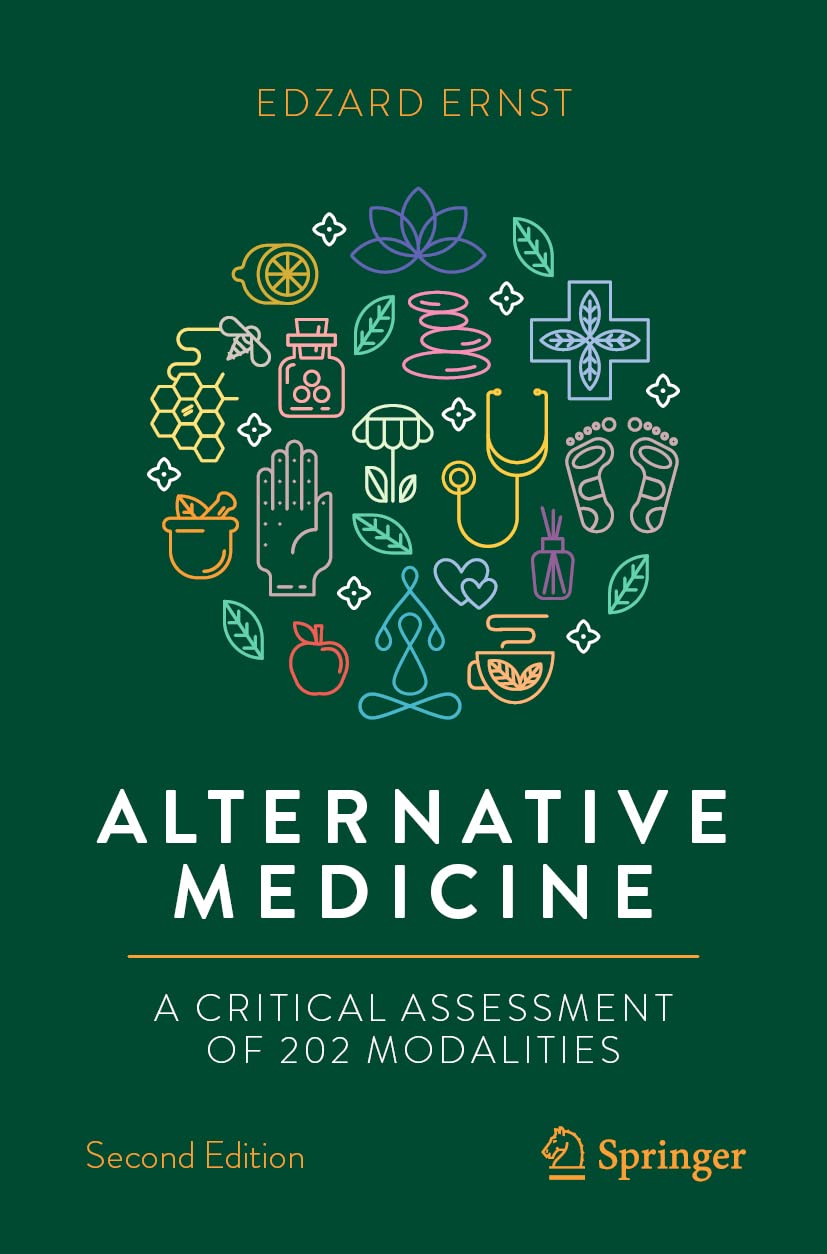
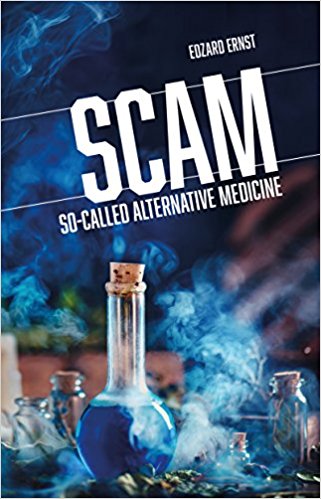
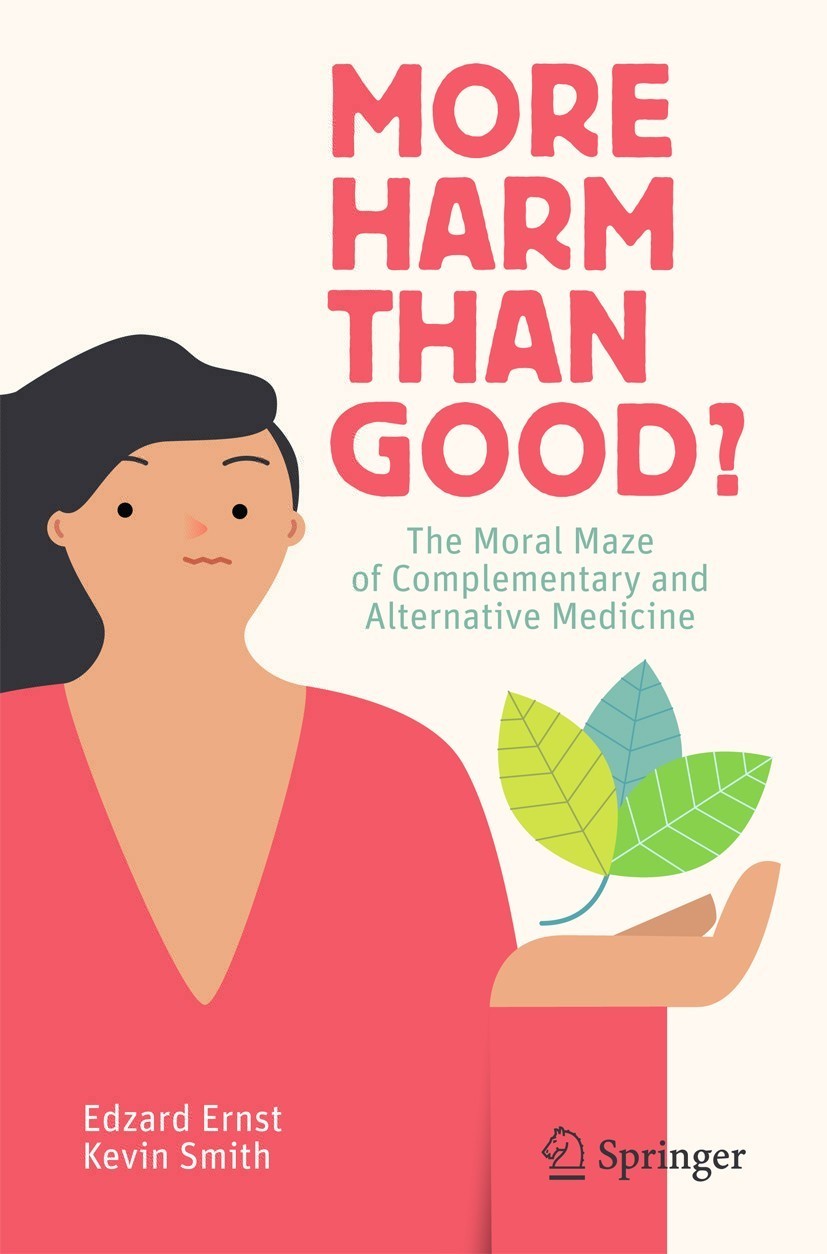
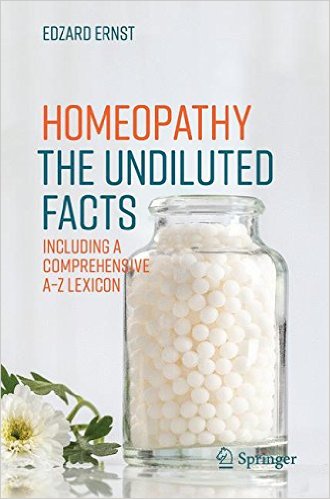

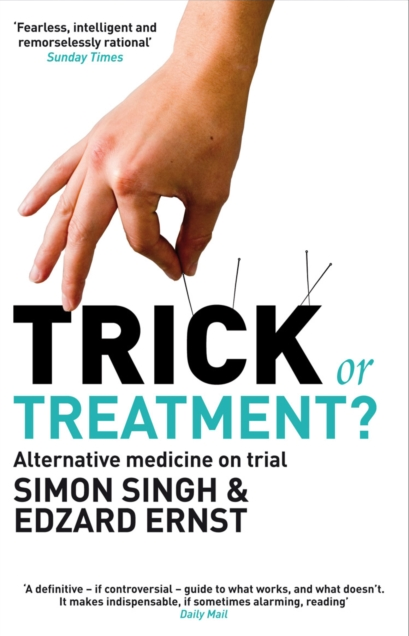
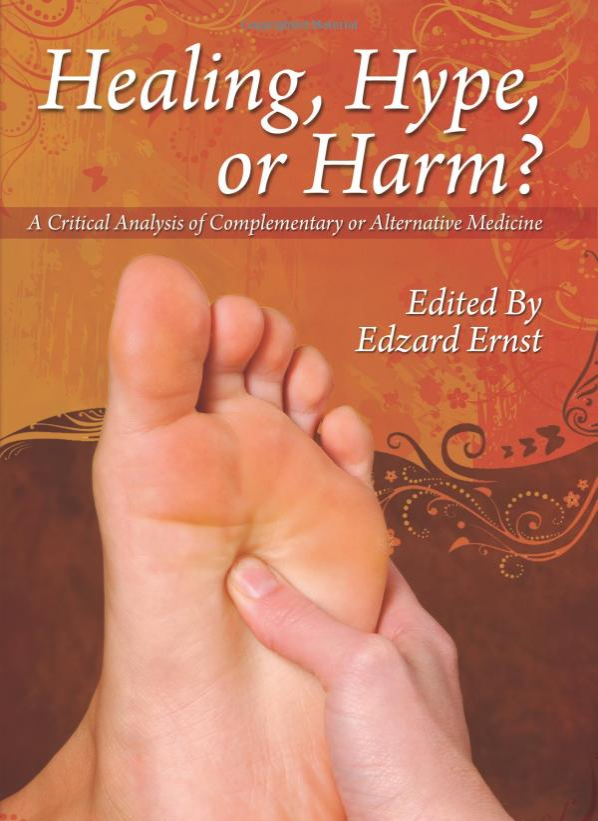








FOUR QUESTIONS TO DC + CRITICAL CHIRO (CC):
1) what does the law say about informed consent for Australian chiros?
2) what info exactly do you have to provide?
3) who monitors it?
4) what published evidence do we have about compliance?
CC then posted this reply:
Here we go again you demand evidence while providing little if any for your own assumptions (poor case studies do not count. The pleural of anecdote does not equal evidence whether it’s from chiro’s or you).
We have been over this many times over many years, I cite research/provide links yet you still find it challenging to take it onboard. It is human nature to feel obligated once making a public statement to defend it no matter how much evidence is sent your way. So not surprising.
“1) what does the law say about informed consent for Australian chiros?”
It is all freely available on the national regulators website (as you know and as I have referenced in the past):
https://www.chiropracticboard.gov.au/Codes-guidelines/Code-of-conduct.aspx
https://www.chiropracticboard.gov.au/Search.aspx?q=Informed+consent
Some research by chiropractors on this topic (cited many times in the past):
Risk Management for Chiropractors and Osteopaths. Informed consent
A Common Law Requirement (2004):
https://www.ncbi.nlm.nih.gov/pmc/articles/PMC2051308/
Quick advanced PubMed with filters set to “Chiropractic” AND “Informed consent”.
https://www.ncbi.nlm.nih.gov/pmc/?term=(Chiropractic)+AND+Informed+consent
Not rocket science
Latest paper that you wrote an ill informed blog on and the comments were not going as you expected (So I expected you to double down like Donald Trump with a new blog within days. Your getting predictable).
https://chiromt.biomedcentral.com/articles/10.1186/s12998-020-00342-5
This paper questions the legal implications of vertebral subluxations with high powered legal input and is a broadside by evidence based chiropractors against vitalistic chiropractors. You respond a snide fantasy informed consent dialogue when you should be supporting the authors:
https://edzardernst.com/2020/11/informed-consent-why-chiropractors-dont-like-it/
“2) what info exactly do you have to provide?”
“4) what published evidence do we have about compliance?”
We have discussed this as well. It is a common law requirement for every profession and is checked upon re-registration by AHPRA every year and by the professional indemnity insurers every year. No informed consent, no registration and no professional indemnity insurance.
Checked AHPRA’s panel decisions and went back 5 YEARS and found ONE decision relating to informed consent:
https://www.ahpra.gov.au/Publications/Panel-decisions.aspx
“3) who monitors it?”
Another of your tired old arguments that we have discussed many times over the years.
In the UK there is the “‘Chiropractic Reporting and Learning System’ (CRLS)” but this is set up by the association representing chiropractors and not the registration board that advocates for patients. Right idea and step in the right direction, wrong organization.
Here years ago there was a trial of an adverse event reporting system in a Melbourne emergency department systematically collected relevant AE information on all professions which was sent to the relevant board for investigation.
It was supported by doctors and chiropractors while physio’s were not involved. A doctor involved told me it was killed off by ER doctors who “snivelled” about the extra paperwork.
There is no AE reporting system for physio’s, chiro’s, osteo’s, GP’s in private practice etc.
Over the years you have harped on and on about this topic as if it is a failing purely of the chiropractic profession when we have supported initiatives for its implementation.
You have also kept up with the research even commenting on an chiropractic researcher on AE’s Charlotte Leboeuf-Yde (who you highly regard) yet ignored until you could take issue with two sentences written in a blog then you wrote this hatchet blog:
https://edzardernst.com/2017/04/we-have-an-ethical-legal-and-moral-duty-to-discourage-chiropractic-neck-manipulations/
So you are asking for evidence yet willfully ignore an author who “I have always thought highly of Charlotte’s work”.
Stop the cynical cherry picked blogs and start supporting the researchers and reformers otherwise you are just someone standing on the sidelines blindly throwing grenades. You do not care who you hit or the damage you do to the chiropractors leading the reform you demand yet consistently fail to support.
____________________________________
I thought the tone of this response was oddly aggressive and found that CC had failed to understand some of my questions. Yet the link to the chiro’s code of conduct https://www.chiropracticboard.gov.au/Codes-guidelines/Code-of-conduct.aspx was useful. This is what it says about informed consent: